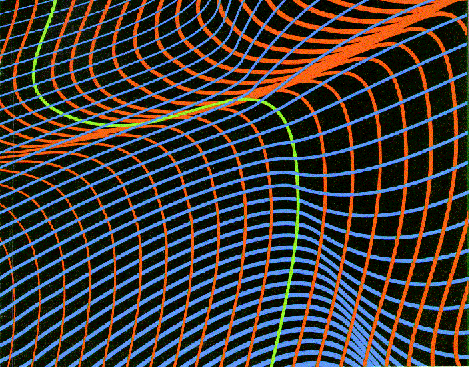|
 Joseph A. Carchidi,
Joseph A. Carchidi,
Group Engineering Manager,
PC Integration
In the 1990s, a major shift is occurring in personal computing, from
isolated, individual work on desktops to work in groups whose members are
located throughout an enterprise. To support this important change, Digital
has developed a family of products, called PATHWORKS, that enables personal
computer users to make the shift from the standalone machine to the network
environment and the resources of larger computer systems.
The roots of PATHWORKS were in place as early as 1980. Digital's
engineering management recognized that a significant part of the growth
in the computer industry would be redirected from minicomputer to
microcomputer products. As the 80s progressed, we learned from our
experience in personal computer hardware development and from the
direction taken by the growing and highly competitive microcomputer market
that industry standard-based products were more important than unique
technologies; that is, open systems, comprising standard devices and
interconnects, were what customers wanted, not more proprietary systems.
Digital's VAXmate personal computer, introduced in 1987, was built on
the industry standard model. Moreover, it offered something no other PC
offered at that time: the VAXmate had the network built in. With foresight,
engineering management determined that our microcomputer business would
tie to our long-standing strength in building networks. Our strategy
thus changed from a focus on hardware development to the development of
microcomputer software.
The critical question then asked-and the one that lead to PATHWORKS
development within Engineering-was whether to provide customers with an
upgrade path similar to those of competitors in the PC LAN business at
that time, i.e., file and print services, or a network environment that
embraced the primary technologies used by customers, i.e., a complete
set of networking applications that included file and print services,
mail, X servers, and terminal emulators. The strategy that took hold
was the latter; we would develop a broad set of products that recognized
customers' investments in a range of personal computer and network
software. Unlike other single-product PC LAN offerings, this set of
products would be engineered to couple large server systems based on
CISC and RISC technologies with the primary microcomputer systems and
would support operation over a local or wide area network. Furthermore,
the mapping between the disparate systems would have to be transparent to
users, and without concessions on performance.
This chosen strategy, of course, was not the easier of the two to
implement. One of our initial tasks was to select which operating systems
to support among the many microcomputer operating systems available
in the market. We decided to define the scope of our early development
work by supporting the most widely popular personal computers, which are
those based on the DOS, OS/2, and Macintosh operating systems. Another
important decision was the choice of a network transport that would
serve as the basis for the interconnection of the systems selected. We
selected Microsoft's LAN Manager software as this transport. MS-NET, the
predecessor to LAN Manager, had the advantage of being network transport
independent, thus allowing us to utilize the DECnet network to extend the
PC LAN software to a wide area network.
In the papers in this issue, you will read about some of the extensive
work that has been accomplished since we first embarked upon this software
effort. Engineers have designed and implemented file servers and network
transports that allow PCs to access files, applications, storage, and print
services on the larger VMS and ULTRIX server systems. Further, a PATHWORKS
application, called eXcursion, brings together the X Window System, the
Windows environment, and the DECnet network. The effect is to link X-so
important to users of UNIX systems- with the PC DOS system environment.
These combined efforts represent a hallmark in Digital's progress toward
open, heterogeneous computing.
Our achievement in the Personal Computing Systems Group has been our steady
progress toward providing customers the open computing environment they
need. The breadth of our product offering has taken on clear definition
within the last year, and we will now begin the work of adding depth to
the PATHWORKS product set. The possibilities for future developments are
truly astounding. Looking ahead five years from now, client workstations
will have the power of supercomputers, and the dramatic progress in
parallel computing will bring additional opportunities for data sharing and
application developments which are in embryonic stages today. Our challenge
in software engineering will be to make all these systems work together in
a well-integrated, easy-to-use, well-deployed computing environment.
|
|